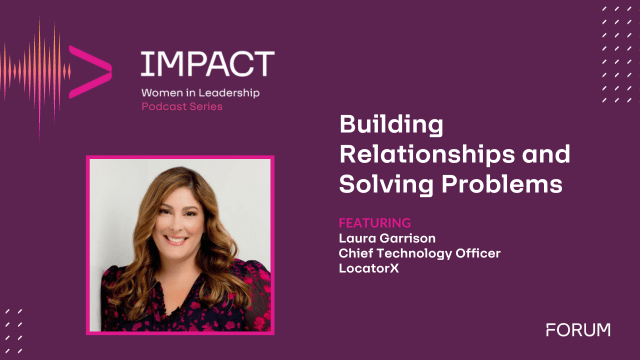In this interview, MileMarker10 CEO Susan Sharer meets with Pamela Powers, Acting Deputy Secretary for the Department of Veterans Affairs, to discuss the renaissance at VA, technology and innovation, the challenges of COVID and scaling, and her perspective as a woman Veteran.
A Renaissance at VA
VA is not the same organization it was three years ago. Under VA Secretary Wilkie, a massive transformation has been underway within the Department that is changing the way we serve and support our Veterans.
We see evidence of our success in the numbers. Veterans’ trust in VA health care rose to a record 90 percent this year. In a Partnership for Public Service survey on best places to work in the Federal Government, VA went from 17 out of 18 to number six and we have held that spot for the last two years.
Under the MISSION Act that went into effect last year, we consolidated seven programs into one, implemented new tools, trained staff and positioned Veterans to be at the center of their own decisions by giving them real, permanent choice when it comes to their health care.
We implemented GI Bill enhancements, added Blue Water Navy service in Vietnam to the Agent Orange presumptive population, and implemented appeals modernization to make everything easier and faster for Veterans.
In October, we expanded our Family Caregiver Program to include Korean, Vietnam and WWII generations, and made it easier than ever to apply for these benefits. We already have over 30,000 applicants going through that process.
The modernization of our electronic health record is continuing to advance. The new system went live in Spokane last month, and soon Veterans and staff in other locations will benefit from this convenient new system of managing health records.
I am so proud of all our teams within VA for the work they are driving and the way they are succeeding.
The COVID Challenge
Throughout COVID-19, we have worked to ensure the safety of our Veterans and our staff. Among our 134 nursing homes we had very low rates of infection based on several preventive steps we took to protect our vulnerable populations.
VA hired more than 10,000 staff to ensure we were able to handle any surge that may come our way and our staff found creative ways to build COVID wards so we could handle patients if the virus spiked. In the end, we boosted our bed capacity by 40 percent during the pandemic.
Through VA’s Fourth Mission, we deployed more than 3,100 VA staff to help with civilian populations by providing PPE and training, and offering testing support to private and state nursing homes and hospitals that were overrun.
Innovation and Technology at VA
Innovation within VA is nothing new, and in fact, I would say it is part of this organization’s DNA. VA partners with academics, experts and industry leaders to develop breakthroughs that improve the lives of our patients.
VA Healthcare has steadily evolved for more than a century, improving health outcomes and access to care. That is a story that is critical to all Americans because improving care for Veterans means improving care for all.
VA’s Connected Care program has helped us stay connected to Veterans virtually, especially during COVID. VA staff are pioneers in the use of 3D printing, which allows us to print medical models that help doctors plan their procedures and reduce the risks of surgery. Our Million Veteran Program is using health care data to help us understand and predict health care outcomes.
We have a precision oncology program that’s making progress on treatments that attack the cancer, not the patient, and we have a new partnership that aims to make similar progress treating breast cancer. We’re using artificial intelligence to forecast kidney disease and measure the risks of suicide. These are just some examples. There are so many, many areas focused on innovation.
Scalable Results
In the past, a breakthrough in one VA hospital didn’t necessarily mean that breakthrough was shared throughout VA.
Today, we’re doing a better job of sharing best practices throughout the organization, and that means the benefits of an innovation in one VA hospital can benefit Veterans around the country.
Veteran Suicide
Veteran suicide is the number one clinical priority at VA. The PREVENTS taskforce released its roadmap in June and we will spend the next few years implementing its recommendations, which call for a nationwide effort to connect Veterans to resources wherever they are – whether that’s at VA or in their community.
VA just released its yearly report to Congress and the numbers show that the suicide rate for Veterans in the care of VA has dropped. That is the first time we have ever seen those numbers decline. For Veterans outside of our care, the numbers do continue to rise so we know we need to work with local organizations and all levels of Government. The Scott Hanlon Act will allow us to do what is needed to help Veterans find care outside VA.
There needs to be an ongoing and organized national conversation about suicide. This is not just something that touches Veterans; it touches everyone, old and young. We need to be able to understand the risk factors, teach people that suicide is preventable, and get as many people as we can to help connect people at risk to the care they need.
Perspective as a Woman Veteran
I joined the Air Force over 30 years ago at a time when the nation was just starting to realize the value that women bring to our nation’s defense. Women are now contributing across the spectrum and serve in every combat role. At VA, women are the fastest growing population and by 2025, VA expects to be serving a million women Veterans.
I am honored to be in this role, to have an opportunity to ensure we value and respect our women in the same way we treat our men. A large portion of our Department is now staffed by women and we are driving to ensure that women are provided gender specific care in a safe and welcoming environment. We are focused on serving all Veterans in the way they want to be served, and we are well on the way to achieving that.
About Pamela Powers
Ms. Pamela Powers served as the Department of Veterans Affairs (VA) Chief of Staff when, on April 2, 2020, the President chose her to serve as Acting Deputy Secretary. As Acting Deputy, Ms. Powers serves in broad roles designated by the Secretary, to include leading enterprise modernization of the Federal Government’s second-largest Cabinet department with a budget of more than $218 billion and over 400,000 employees serving in VA medical centers, clinics, benefits offices, and national cemeteries across the country. Ms. Powers has nearly 30 years of service in the Air Force and the Department of Defense, with experience in executive-level management, policy development, strategic planning and programming, legislation, operations, and communications. Before joining VA, Ms. Powers served as Chief of Staff to the Under Secretary of Defense for Personnel and Readiness. In that capacity, Ms. Powers was responsible for day-to-day operations of Department of Defense Total Force Management as it relates to readiness, National Guard and Reserve component affairs, health affairs, training, and personnel requirements and management, including equal opportunity, morale, welfare, recreation, and quality of life matters.












